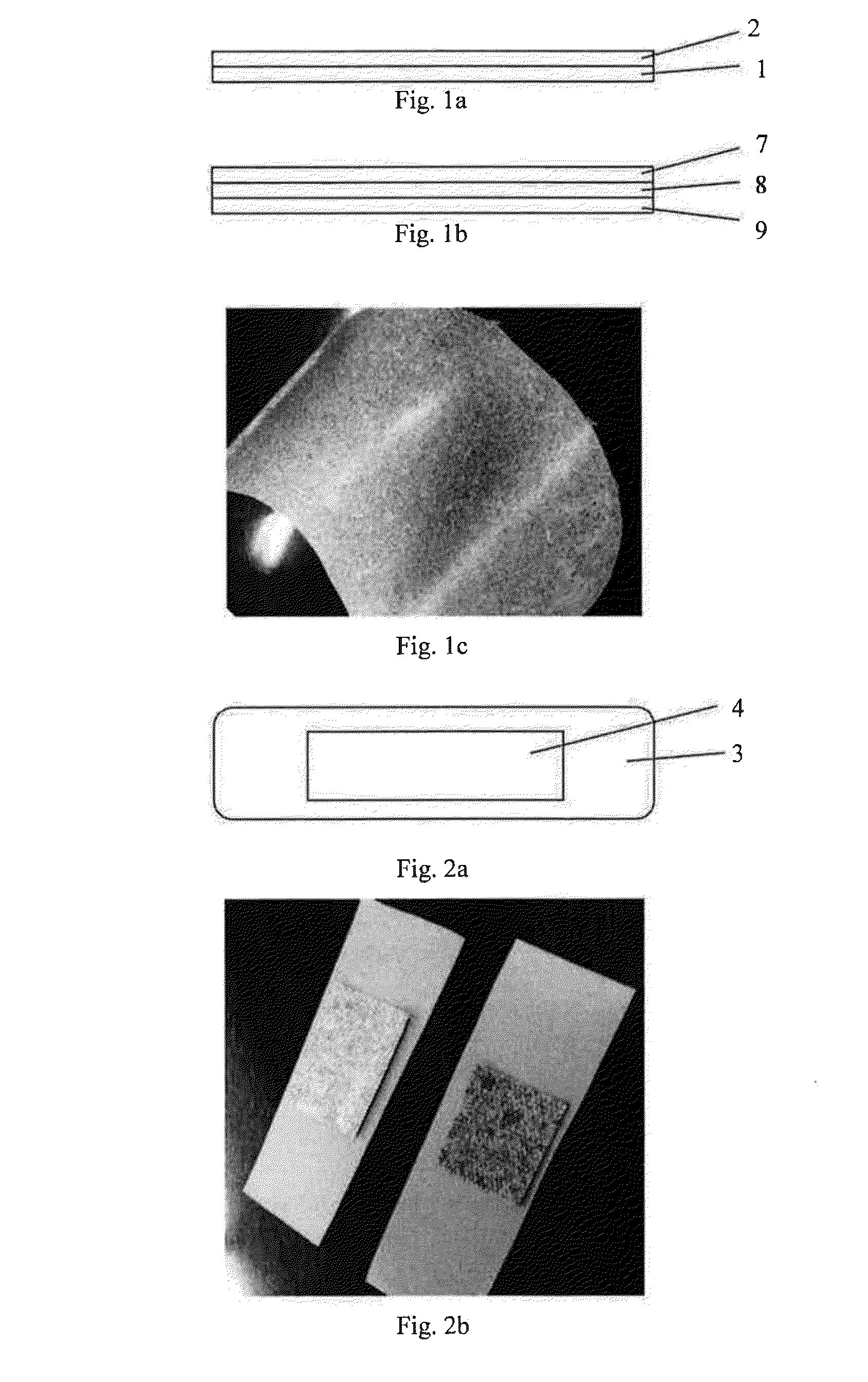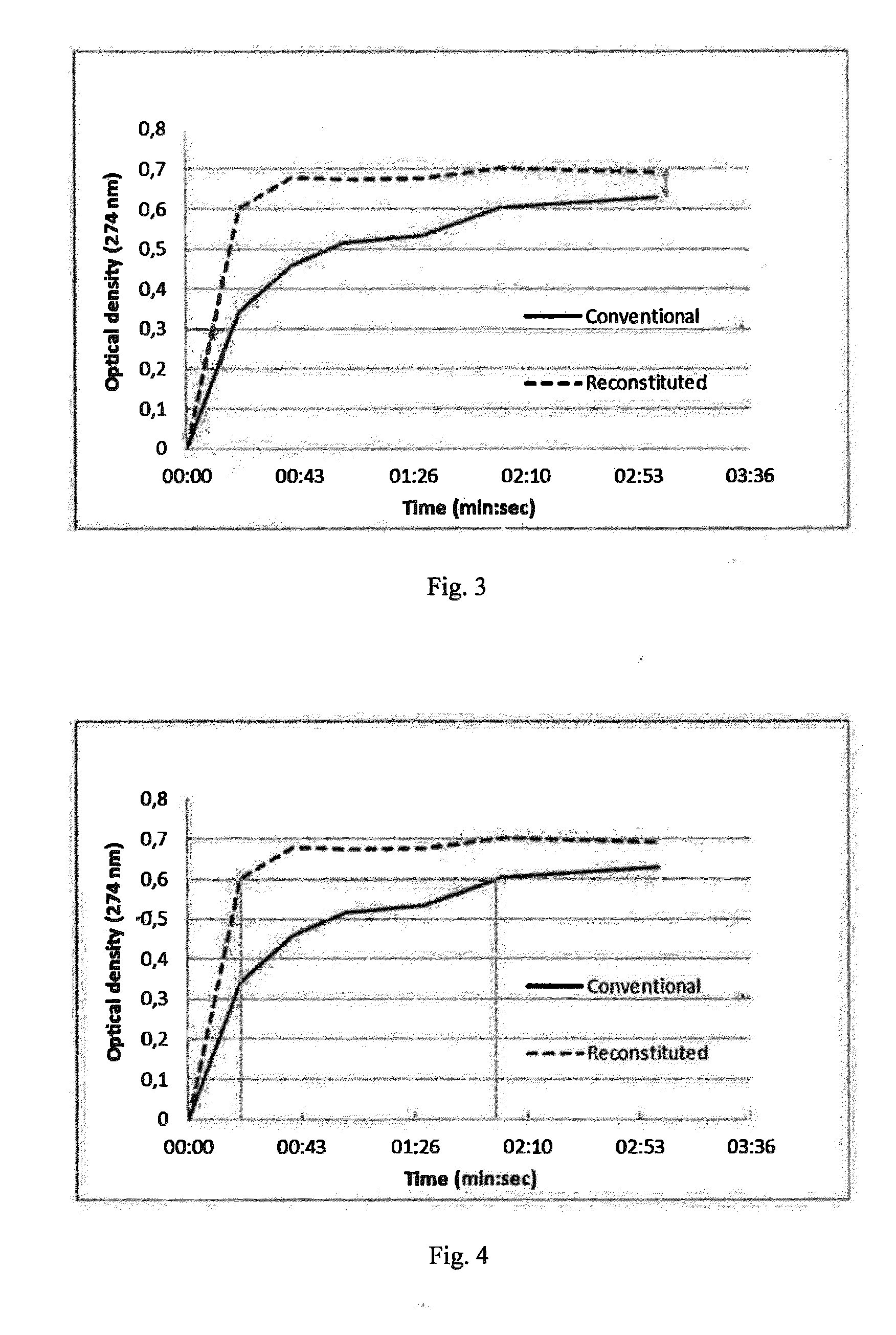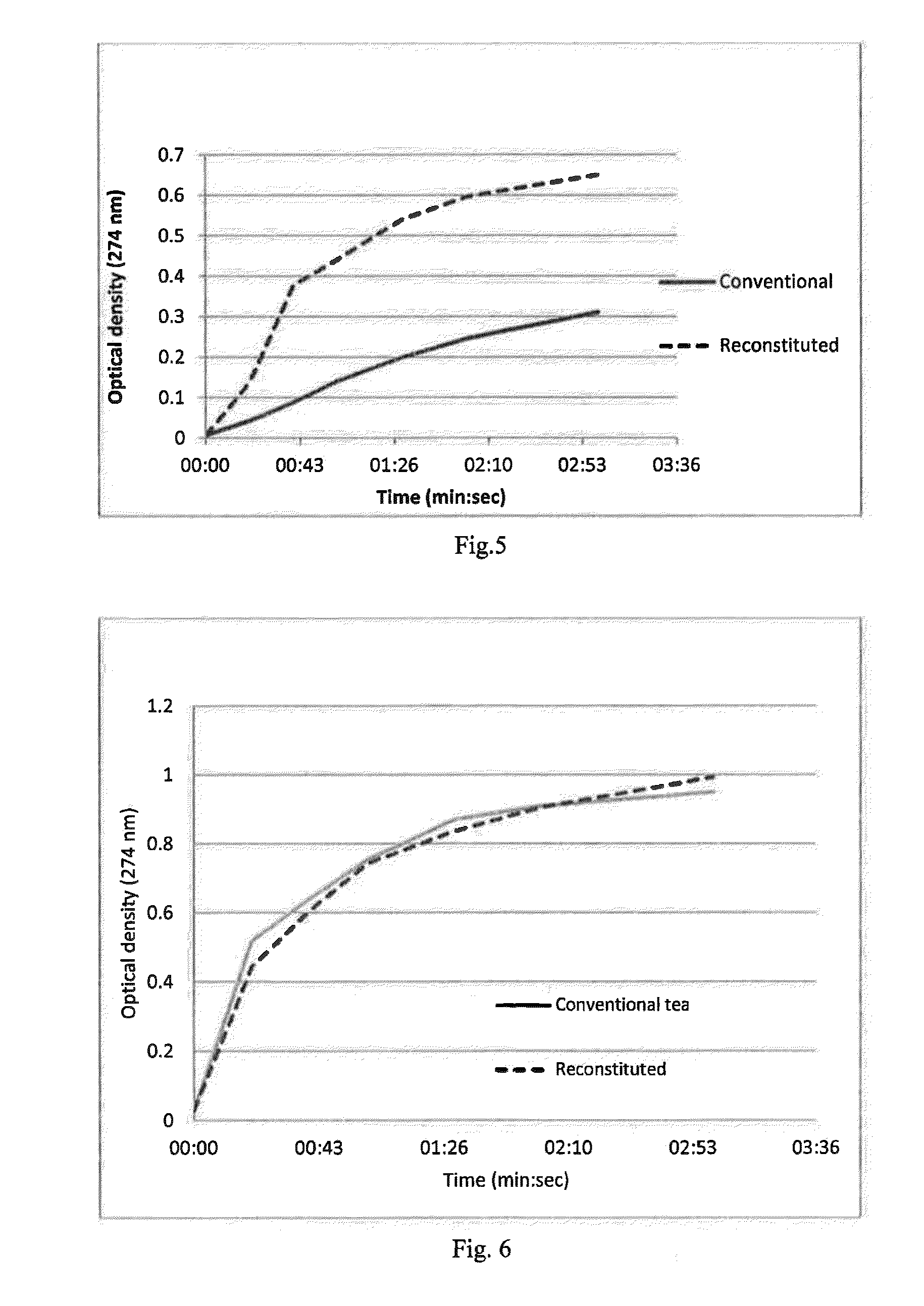Product Comprising a Plant for Medicinal, Cosmetic, Coloring or Dermatologic Use
- Summary
- Abstract
- Description
- Claims
- Application Information
AI Technical Summary
Benefits of technology
Problems solved by technology
Method used
Image
Examples
example 1
Method of Making the Reconstituted Plant Product
[0204]As raw material a black tea plant was used. The plant was mixed with water with a plant / water ratio of 1 to 5 by weight and the mixture was heated at 85° C. for 20 minutes. Subsequently, the aqueous portion was separated from the fibrous portion by an extraction step in a hydraulic press. Afterwards, the fibrous residue was again heated at 85° C. for 10 minutes with a plant / water ratio of 1 to 5 by weight. Again, the aqueous portion was separated from the fibrous portion by an extraction step in a hydraulic press. Then, the samples were refined in a Valley beater at 1.4% consistency for 10 minutes. As a next step, cellulosic fibers and in particular (a blend of abaca, hardwood and softwood pulps, with the respective ratios: 60 / 10 / 30) were added to the fibrous residue with a fibrous residue / woodpulp ratio of 5 to 1 in weight and hand sheets were made. The aqueous portion, which was separated by pressing, was concentrated in an eva...
example 2
[0213]The reconstructed plant product obtained according to the method as explained in example 1 was used to determine a first extraction rate. On the other hand, natural black tea in a conventional cellulosic bag was used to determine a second extraction rate. The first and second extraction rates are representative of the speed soluble substances, mainly caffeine in this example, can be released from the plant products. The result is graphically shown in FIG. 4.
[0214]Like in example 1, the reconstructed plant was immersed into water at 90° C. and the optical density was measured over time. Likewise, the conventional plant product was immersed into water at 90° C. The more solubles, mainly caffeine in this example, are released from the plant, the higher the optical density of the respective water will be. As shown in FIG. 4, the optical density of the water with the reconstituted plant (dashed line) changes faster than the water with the conventional plant (continuous line). An op...
example 3
[0217]In this example exactly the same setup was used as in example 2, only the water was at room temperature, i.e. 20° C.
[0218]As shown in FIG. 5, the optical density of the water with the reconstituted plant (dashed line) changes faster than the water with the conventional plant (continuous line). The water with the reconstituted plant reached an optical density of 0.3 within about 30 seconds and an optical density of 0.6 within about 2 minutes. In contrast, the conventional plant in a bag required about 6 times longer to provide the optical density of 0.3. Hence, the reconstituted plant product provides faster extraction of solubles, mainly caffeine, than conventional plant in bags.
[0219]Similar results were obtained when reconstituted plant was compared to natural black tea in loose form.
PUM
| Property | Measurement | Unit |
|---|---|---|
| Percent by mass | aaaaa | aaaaa |
| Fraction | aaaaa | aaaaa |
| Weight | aaaaa | aaaaa |
Abstract
Description
Claims
Application Information
 Login to View More
Login to View More - R&D
- Intellectual Property
- Life Sciences
- Materials
- Tech Scout
- Unparalleled Data Quality
- Higher Quality Content
- 60% Fewer Hallucinations
Browse by: Latest US Patents, China's latest patents, Technical Efficacy Thesaurus, Application Domain, Technology Topic, Popular Technical Reports.
© 2025 PatSnap. All rights reserved.Legal|Privacy policy|Modern Slavery Act Transparency Statement|Sitemap|About US| Contact US: help@patsnap.com



